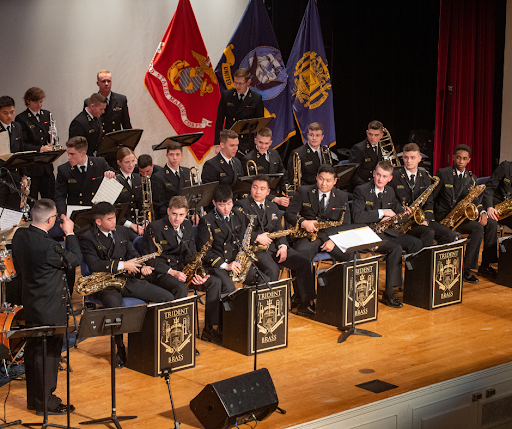
Summary:
Veterans Day at the Naval Academy is a solemn, deeply meaningful observance honoring all who have served. This day connects generations of veterans, including those who have served in the past and the future leaders now training on the Yard. Midshipmen pause to reflect through ceremonies, community events, and acts of remembrance such as Wreaths Across America.
Every year on November 11, the Yard takes on a special kind of reverence. The flags wave a little prouder, the footsteps echo with more meaning, and the stories of service and sacrifice feel closer than ever.
Veterans Day isn’t just a significant military date - it’s a chance to pause, reflect, and thank the men and women who put on a uniform to protect our country. Here at the Naval Academy, where the next generation of leaders is shaped, the meaning of this holiday runs especially deep.
The Roots of Veterans Day
So, why is Veterans Day on November 11th? Veterans Day began as Armistice Day in 1919, marking the end of World War I on “the eleventh hour of the eleventh day of the eleventh month.” Commemorating the armistice between the Allied forces and Germany, that moment of peace was so significant that President Woodrow Wilson declared it a day of reflection, pride, and gratitude.
What started as a tribute to WWI veterans soon expanded. By 1954, after WWII and the Korean War, President Dwight D. Eisenhower officially renamed the day Veterans Day - broadening the significant military date to honor all veterans, past and present, from every branch of service. Over time, adjustments were made to the date, but in 1978, the observance officially returned to November 11th, where it remains today.
This history matters because it reminds us that Veterans Day isn’t just about one war or one generation. It’s about honoring all who have answered the call, whatever uniform they wore.
Veterans Day on the Yard
At the Naval Academy, Veterans Day carries extra weight. This is, after all, where so many journeys of service begin. Every midshipman walking across the Yard knows that someday, they too will join the ranks of those honored on this day.
There are many ways to honor veterans here. The Academy cancels classes each year on November 11 to allow space for reflection and remembrance. Midshipmen, faculty, and visitors alike participate in commemorations that highlight the courage of veterans from every conflict.
Sports also play a part in the celebration. The Veterans Classic men’s basketball tournament is hosted annually in Annapolis, bringing together teams, fans, and veterans in a powerful moment of tribute. This year, the 12th annual event will take place on November 7th in Alumni Hall.
The Academy also participates in Wreaths Across America, placing remembrance wreaths on the graves of fallen heroes. This year, they’ll place wreaths on Friday, December 12th. These acts, big and small, keep the legacy of service alive and ensure that every veteran, whether known or unknown, is remembered.

Related: Wreaths Across America: Remembering Our Veterans
Celebrating and Supporting Our Veterans
Across the country, Veterans Day is marked by parades, ceremonies, and moments of silence. Arlington National Cemetery is home to over 400,000 service members and their loved ones, and each year a memorial service is held to honor them. Internationally, our allies pause as well - Canada with Remembrance Day, Britain with Remembrance Sunday, and European and Commonwealth countries with two minutes of silence at 11:00 a.m. on November 11th. But here in Annapolis, Veterans Day is also a call to action.
How to Honor Veterans
Every visit to the Yard - whether you’re taking a tour, enjoying a meal, or shopping for Navy gear - directly supports the Brigade of Midshipmen. Proceeds from USNA tours and the USNA Gift Shop fund extracurricular activities that strengthen camaraderie: cultural arts, theater, music, and club sports. In other words, by honoring the veterans who came before, you’re also investing in the future officers who will carry on that legacy.
Related: Service Assignments: Where Is the USNA Class of 2025 Heading Next?
How to Best Thank the Veterans
At its heart, Veterans Day is about gratitude. Gratitude for the freedom we enjoy, gratitude for the sacrifices made, and gratitude for the unbroken chain of service that stretches from the Yard to every corner of the world where Sailors and Marines stand watch today.
Here at the Naval Academy, that chain is visible every day. It’s in the midshipman hurrying to class. It’s in the stories of alumni who return to share lessons learned in combat. And it’s in the quiet reverence that settles over the Yard each November 11th, as we remember those who gave everything. There are so many ways to honor veterans.
So this Veterans Day, we invite you to join us. Visit the Yard, walk in the footsteps of heroes, and reflect on why this holiday means so much here. Whether you’re honoring the Marines and Navy of generations past or supporting the midshipmen who will shape the future, your presence helps to keep their legacy alive. Come be a part of it.






